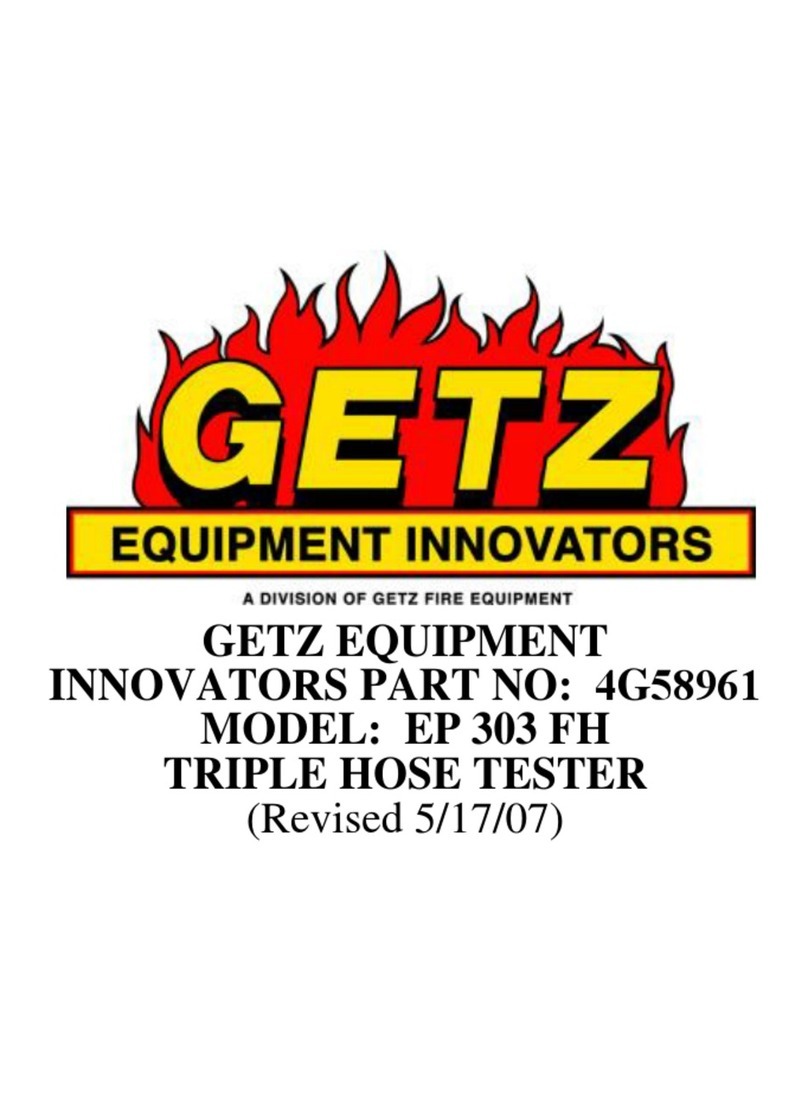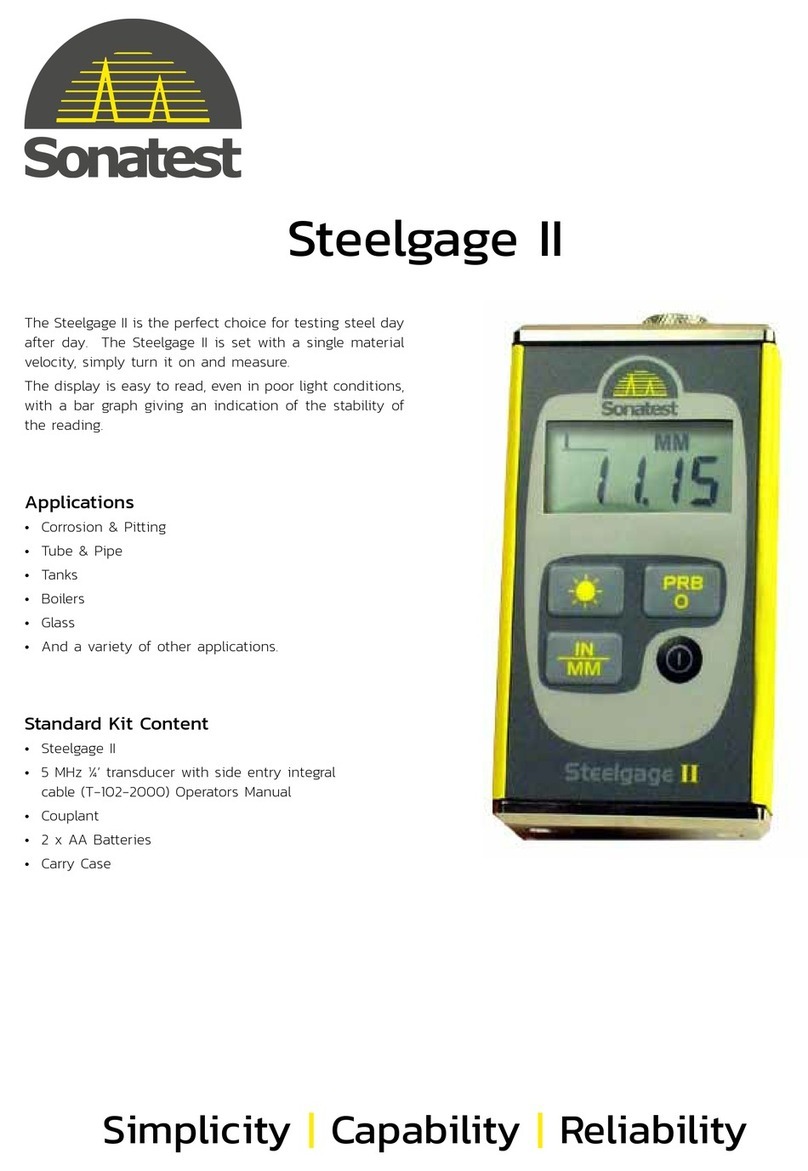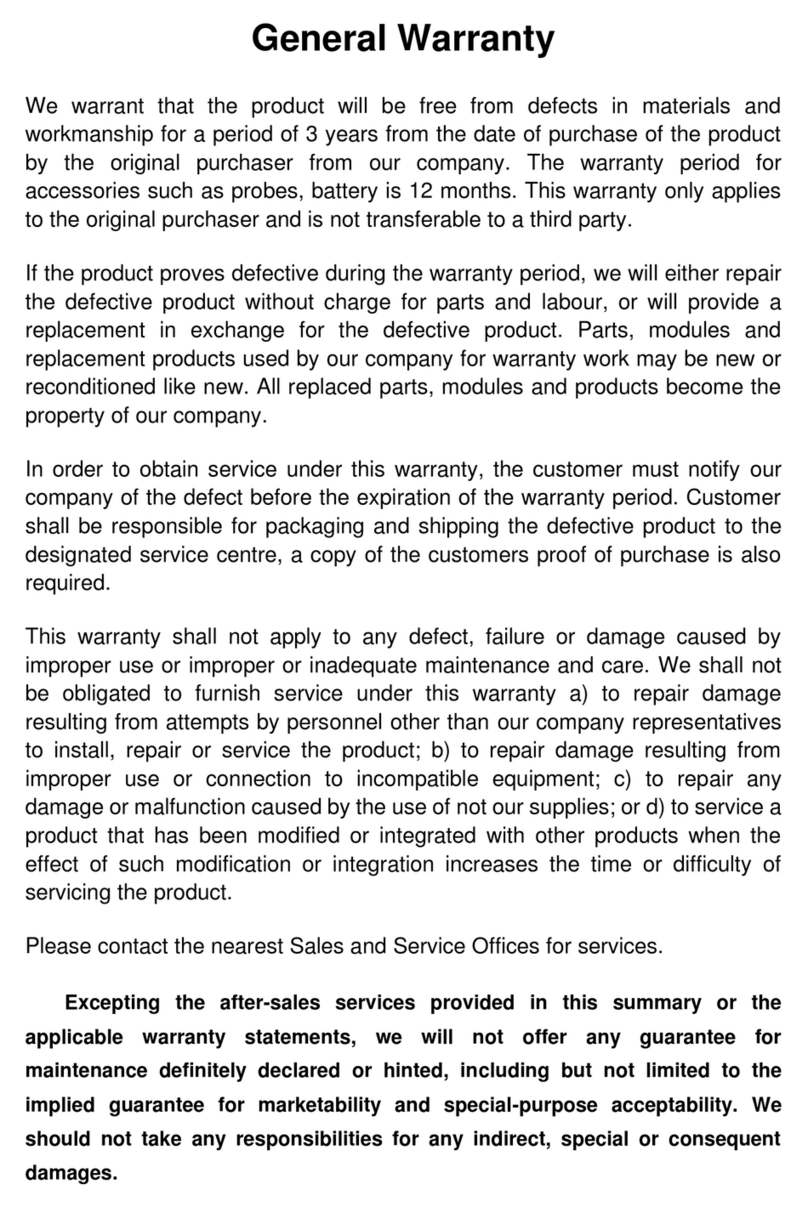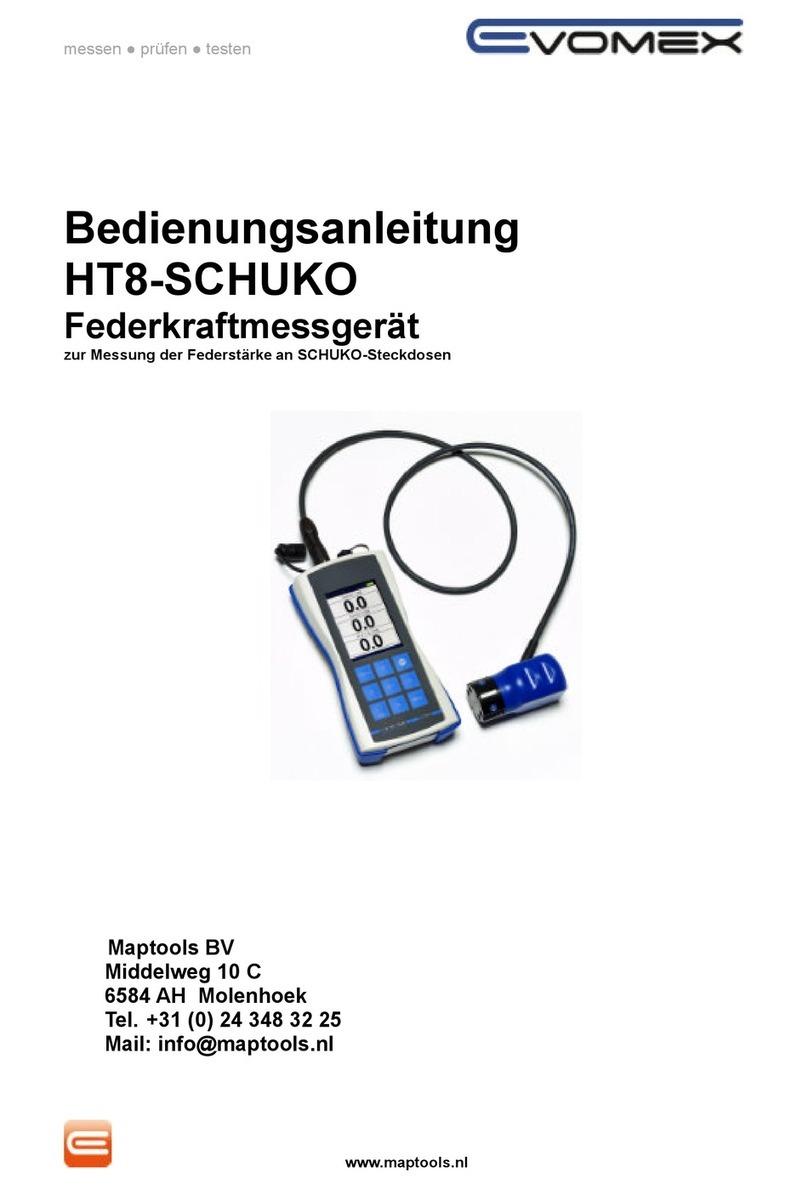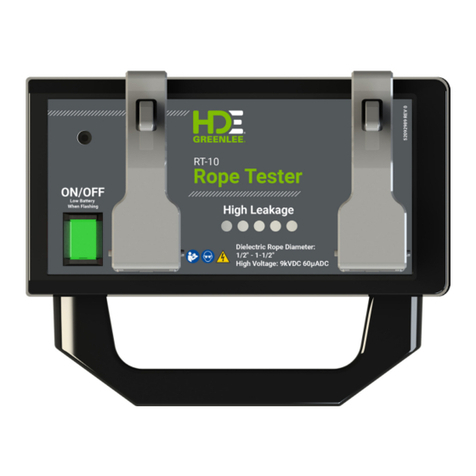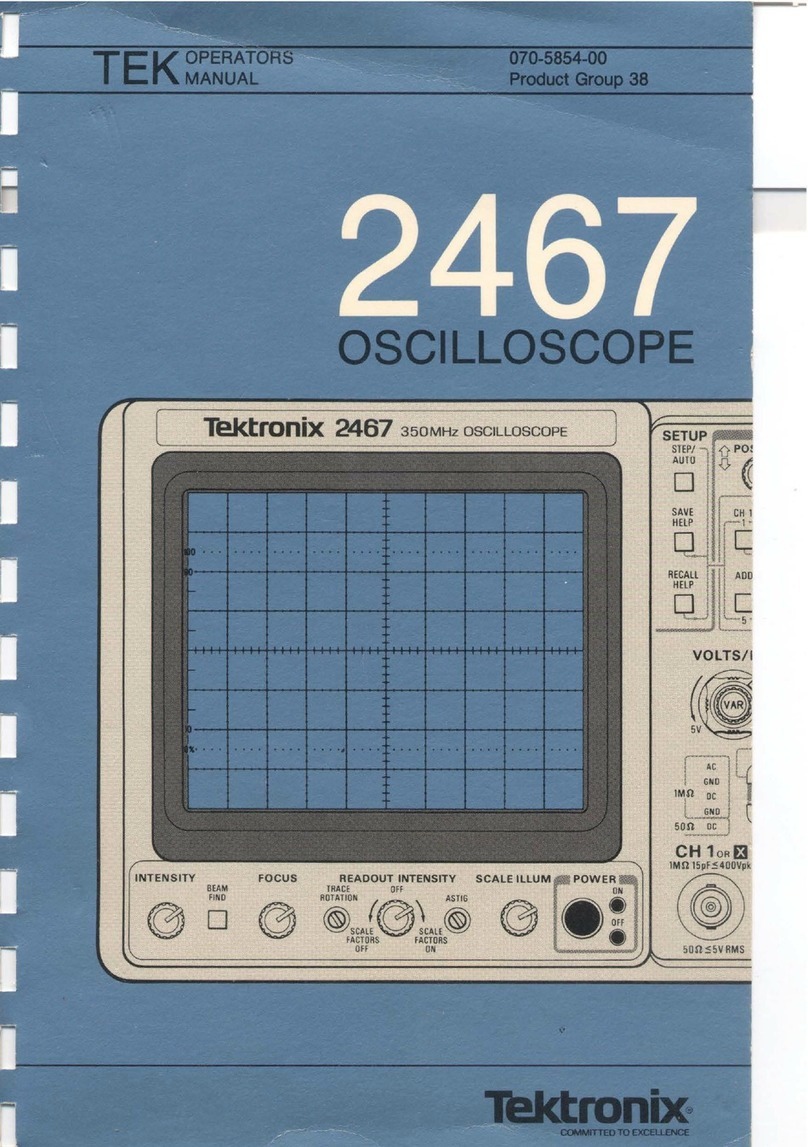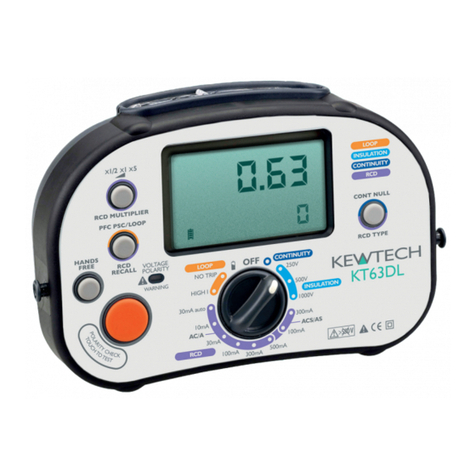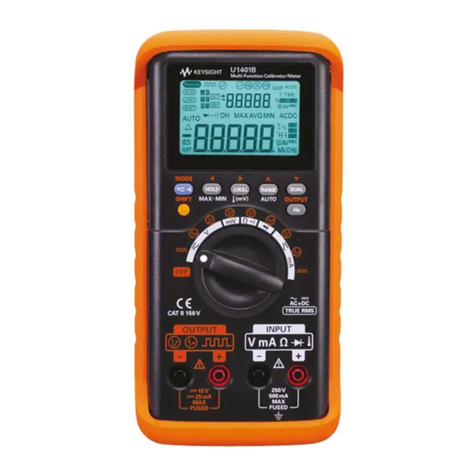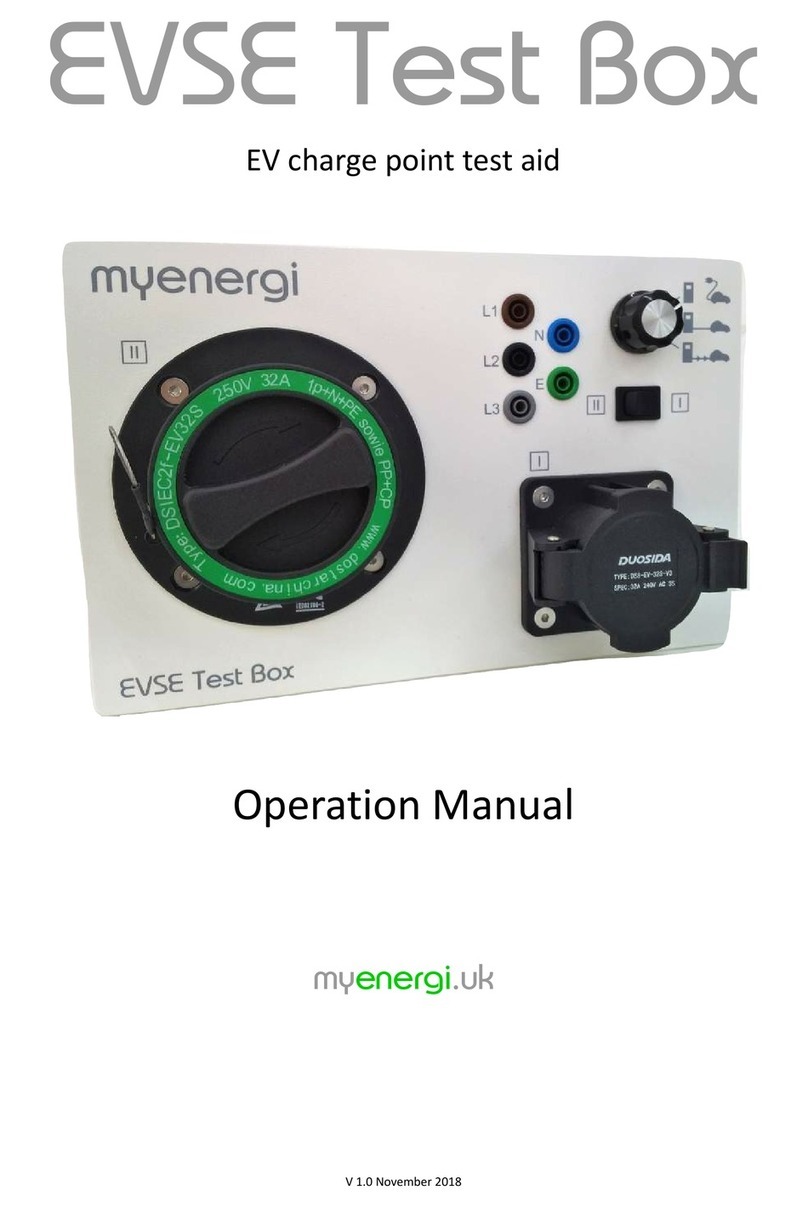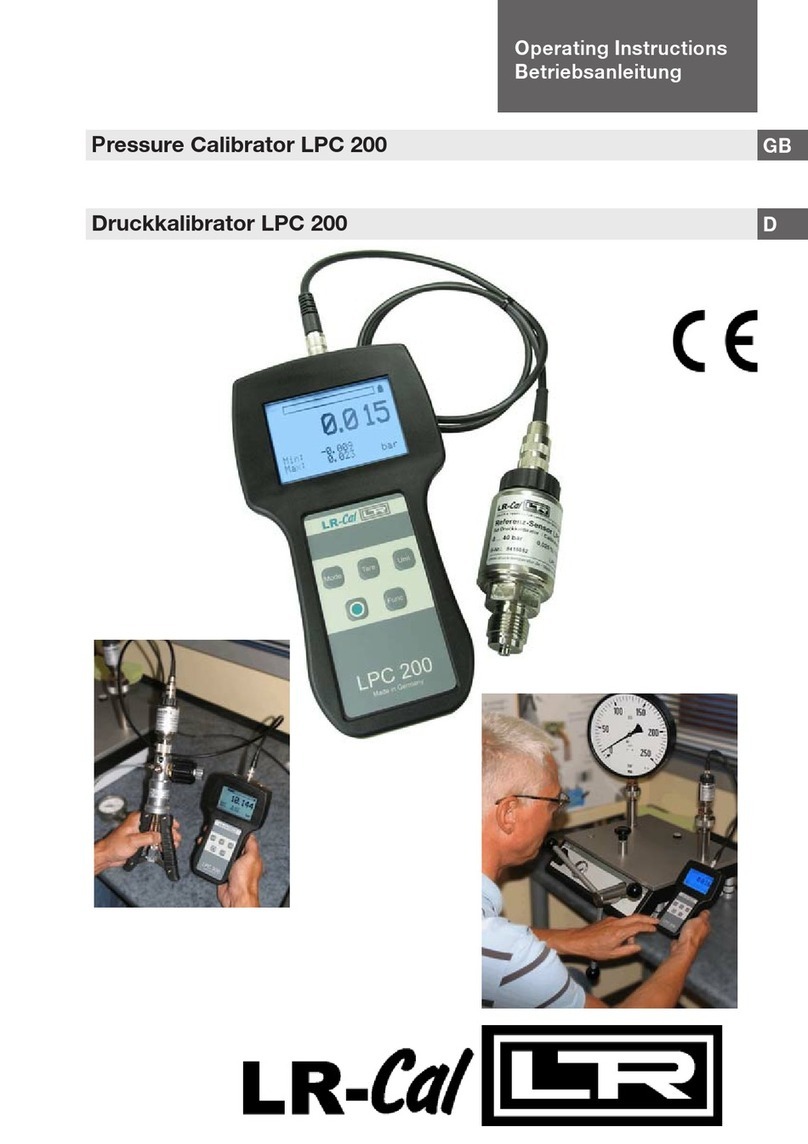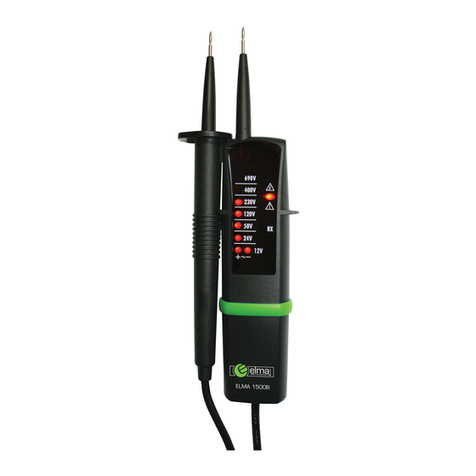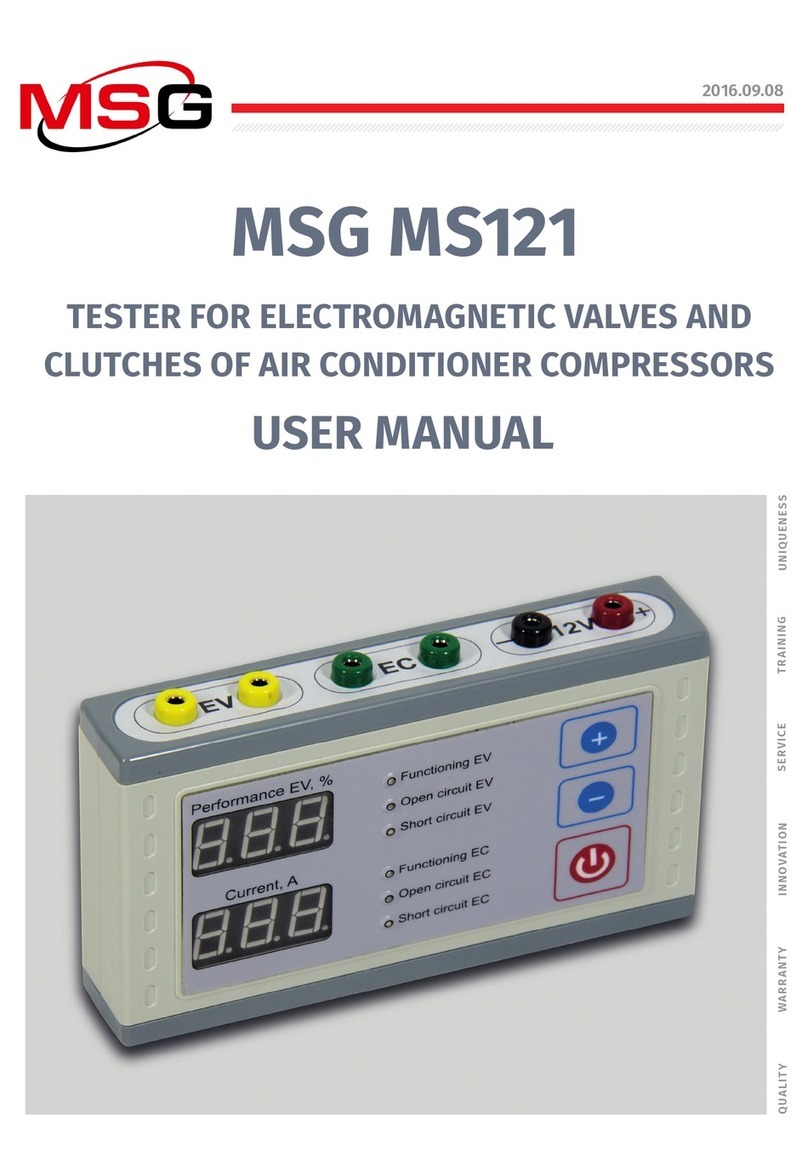MGF 905100 User manual

1
Art. 905100
ELECTRIC PRESSURE
TESTER
User Manual
Rev. 1.0 of 02/08/2016

CONGRATULATIONS! The tool you have purchased has been manufactured using
high end technologies and innovative materials. This sheet gives you important
informations about safety and to work at best possibilities with our pump. Keep this
sheet and read it carefully.
Purpose of use
Purpose of use
This electric pump is made to test plants and for liquid transplanting (see attached
table). We refuse every responsibility for every kind of damage caused by an
improper use of this pump.
Every modification to the machine isn’t allowed without
written permission of
MGF
MGF
s.r.l.
Power: 0,745 KW Voltage: 230 V~
Frequency: 50 ~ 60 Hz R.P.M.: 1400 RPM
Max flow rate: 17 l/min Pressure: 20 bar
Weight: 17 Kg. Tank: 12 l
Before Operating
Before Operating
(1) Before starting working, check if packaging isn’t damaged and that inside
there are all required optionals. Every machine has a label with a serial id
number and technical data.
(2) Check all working contidions and verify if they allows you to work in safe way
(lighting, humidity, temperature, wind…).
(3) Before connecting to the mains, check that electrical requirements reported
on the label are satisfied by the mains same. Connect to a plant equipped
with differential switch or similar safety devices. If you need to use long
power cords, ensure that the section of every wire is enough to draw all the
required power.
(4) Avoid every contact between electrical parts and water.
(5) Oil Level Check
(6) The pump is completely tested before shipping and so is full with oil. If
necessary, or after 500 work hours, fill oil tank up to level with 0,08 liters of
SAE 30 oil.
(7) WARNING: higher oil level will cause high pressures and stresses inside the
pump and, consequently, may damage the pump head.
(8) The suction hose mustn’t have bendings and inlet filter must be clean, in
order to reduce suction head and to let the pump to work in better
conditions.
(9) Avoid also air suction, that will cause pressure instability and can make
2

difficult testing operations.
(10)In this case, ensure that inlet hose and bypass hose aren’t too close, in order
to avoid turbolences inside tanks.
(11)Air accumulator is loaded at 5÷6 bar, corresponding to max working pressure
of the pump. This tank avoids pressure oscillating at outlet. For this reason,
to have the best pressure control, periodically check pressure inside air tank,
by connecting a car wheels air gun to the valve on the head. If necessary,
load the accumulator to 5÷6 bar max.
(12)We suggest to keep max suction height under 3 m. Use always hoses without
bendings and, if possible, filled with water.
(13)
Pump can be started only with bypass valve completely opened.
In this way
you won’t load (and overheat) without reason the motor during start
transient. The connection of the high pressure hose must be made without
high torque, in order to not damage connection threads.
Working
Working
Plant Tests
Put the pump on a horizontal surface. Connect test instrument to the plant. Open test
valve and bypass valve.
When the water flow begins, close bypass valve and fill the plant with the water, and
outflow all air or gases in general inside plant.
Turn press valve in order to reach requested pressure, then close test instrument
valve and open bypass lever.
During the test you can leave test instrument on the plant and disconnect the pump.
Using differents test instruments, it’s possible to make different parallel test using
only a pump.
Fillings and Transplantings
Check always chemical compatibility before working. The std version is equipped with
Nitrile gaskets. Inlet and bypass hose must be put into the tank with the liquid to be
transplanted. High pressure outlet hose must be connected to the system to be filled
(i.e. solar panel system) or into the tank to be filled. It’s possible to leave inlet filter
only if the working fluid is clean and without suspended particles.
Before starting pump, open completely bypass pump.
After Use
Cleaning:
To preserve good working performance, after working, you may clean the
pump by pumpung for 2-3 minutes clean water, then leaving the pump on without
inlet flow, to dry the head inside.
Low Temperatures:
Avoid frozen water inside the pump: it can damage pump and
gaskets. After use, dry the pump and/or pump inside a no-frost solution (water and
3

glycole). This preserve gaskets also for long stop times.
Check: Periodically check the pump and its components. Use only original spare
parts.
Warnings
Warnings
Respect always purpose of use and instructions, and general safety warnings.
Put the machine away from children and animals.
Light and keep clean working area.
Choose working position and displacement to work in safety.
Use only handle for transport. Don’t use power cord or high pressure hose: you can
damage them and increase risk.
Be careful: don’t use water jet to wash the pump, don’t start pump before connecting
to a plant or a tank. Check carefully connections before starting.
The pump cannot work with flammable or toxic or dangerous fluid in general. The
viscosity of the fluid must be at max 0.0015 Kg/(m s).
In case of maintenance works, disconnect power cord and unload the air tank. If
connected to a plant, disconnect the pump from the plant. Pressures inside the pump
can throw parts during maintenance, causing damages to peoples and things.
Working, the pump has an acoustical power lower than 83dBA.
This is an electrical tool: respect general electrical devices safety instructions,
disconnect the pump after working and before maintenance, don’t let water enter in
contact with the electrical parts.
The pumps guarantee loses its validity if this booklet instructions aren’t respected.
Maintenance
Maintenance
Use only original spare parts. Our spare parts are checked and ensure quality and
reliability. Keep the machine clean, you’ll dramatically reduce maintenance costs.
Suction valve and gaskets
Dirty can damage O-Rings and/or cause the not perfect valve closing. Remove valve
cover, valves and check for dirty and for damaged gaskets.
Diaphragm Substitution
Disassemble head and diaphragm. Wash internally with petroleum. Assemble new
diaphragm with piston at inferior dead point. Be careful, insert diaphragm in the place
on the head. While filling the pump with oil, turn manually the shaft to outflow air.
Check oil level after this operation. Then close oil tank with the plug. In a second
time, check oil level with pump at high pressure.
4

Oil Change
The first oil change must be performed after 500 hours. Unscrew oil load plug and let
exhaust oil flow outside pump. It’s suggested to wash inside the pump with
petroleum. After refilling, turn on the motor without pumping fluid for some minutes.
During this operation, check oil level and refill if necessary. The oil requested is SAE
30W40 or similar.
Troubleshooting
Troubleshooting
The motor doesn’t start: Check if power cord isn’t damaged and then verify if
electrical connection respects motor data on label.
The motor stops suddenly: Probably thermal protection switch has disconnected
the motor. Wait for some minutes, then restart. Check if power has breaked and if
the motor starts slowly. Is the bypass valve opened ?
Motor overheating: Check cooling fan good working, starting conditions and oil
level. If necessary, contact our technical helpdesk.
The pump doesn’t turn: Check if the bypass valve is open. Check starting
capacitor. If necessary, contact our technical helpdesk.
The pump cannot reach requested pressure: Verify for losses on plant, close
pressure regulation valve. If necessary, clean inlet filter. In a second time, check for
valve wearout or dirty. If you need one, use only original spare parts.
Low flow rate: Check for dirty on inlet filter or for small section on suction
hose, that can cause losses. If the pump is also noisy, check oil level. If necessary,
contact our technical helpdesk.
Pressure oscillation: Check for air inside the pump. To eliminate this air, work for a
while with outlet opened. Be careful, water jet can be dangerous for electrical and
mechanical risks. Check, with motor turned off, that air accumulator is loaded at right
pressure. In a second time, check valve wearout or dirty inside. If necessary, contact
our technical helpdesk.
White oil or oil from outlet: Diaphragm broken. Change diaphragm.
5

Chemical Compatibility
Chemical Compatibility
Viton Nitrile
Acetaldehyde AB
Acetamide AA
Acetic Acid DC
Acetic Anhydride DA
Acetone DD
Acetylene AA
Acryionitrile CD
Alcohols Amyl AA
Benzyl AD
Butyl AA
Diacelone DD
Ethyl AA
Hezyl AA
Isobutyl AC
Isopropyl AC
Methyl CB
Octyl AB
Propyl AA
A = very good B = good C = poor D = not allowed
Conformity Declaration
Conformity Declaration
The Manufacturer MGF
MGF srl - Via Mendes, 8 - 43055 Mezzani (PR) - ITALY declares
that pressure testers 905100 are manufactured according with 2006/42/EEC
regulations.
ing. Francesco Maioli
6
Table of contents
Other MGF Test Equipment manuals




